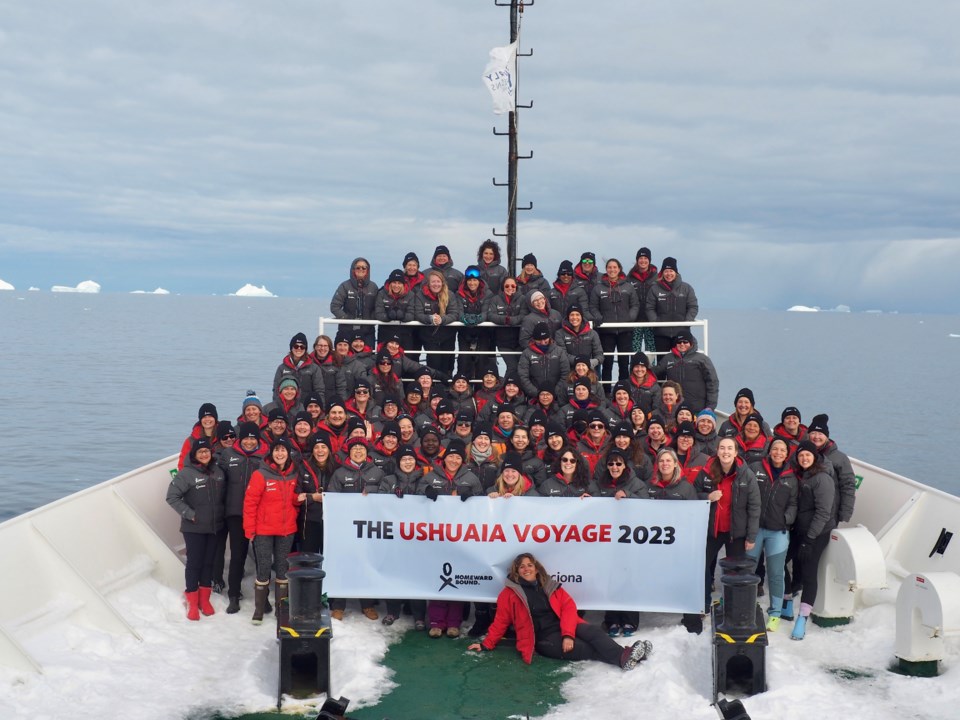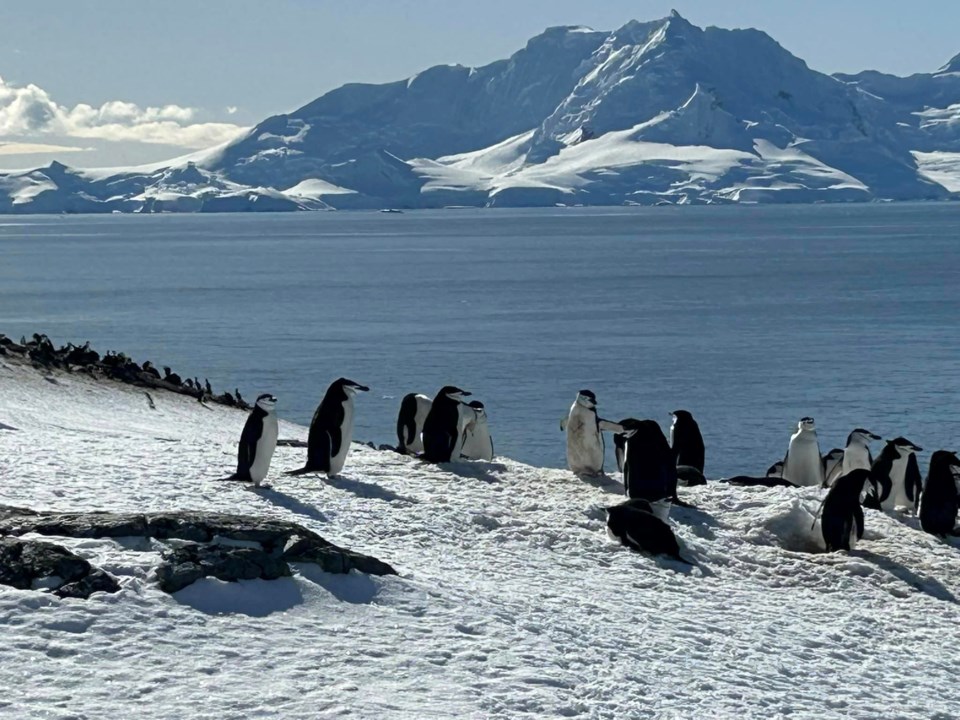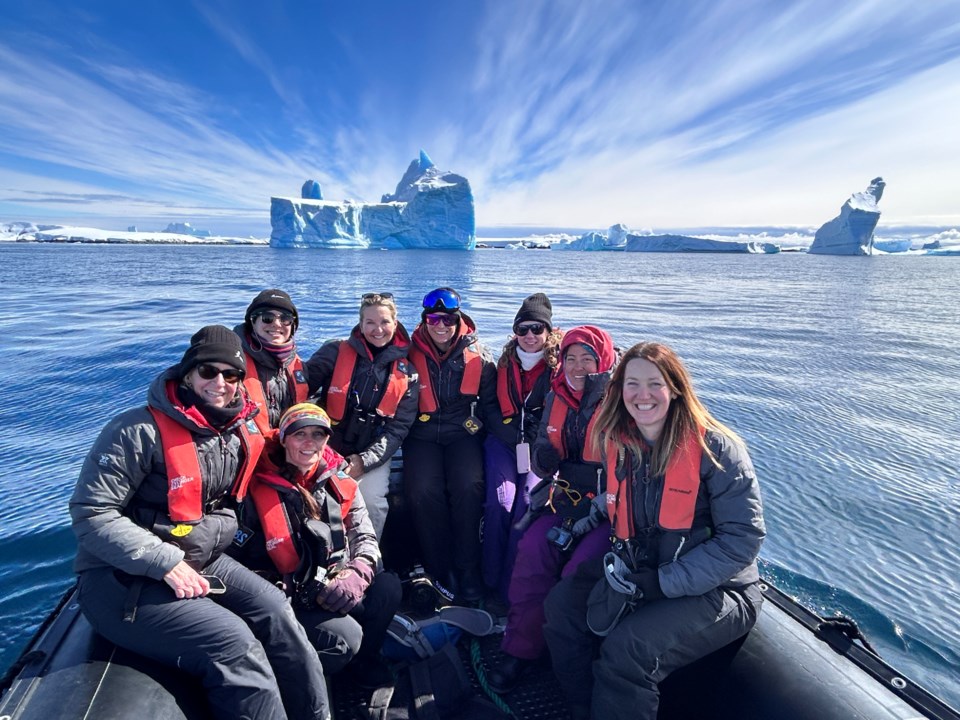Julile Moskalyk of Sudbury will likely never forget the first time she set foot on the continent of Antarctica. And as amazing as it was for her, Moskalyk said she will never return, and she has a good reason for that.
Moskalyk, who is the science director at Science North, was part of a three-week trip to the bottom of the world in November, 2023. She was part of the latest Homeward Bound Expedition to that continent with women who were all involved in STEMM, representing diverse fields of Science, Technology, Engineering, Mathematics and Medicine.
Moskalyk said it was the largest ever all-female expedition to Antarctica with 87 women from 19 countries around the world.
While it was a trip of a lifetime for Moskalyk, it took a lot of planning. Just getting to that part of the world was an adventure. She was accepted to the STEMM Homeward Bound project in the summer of 2019. She described the trip as a ground-breaking global initiative, supporting and engaging a diverse network of women in STEMM “to lead collaboratively and ensure the sustainability of the planet,” said Moskalyk.
Besides Moskalyk, there were two other Canadians on the expedition: Dr. Sara Ritzie, a veterinarian from Guelph, and Dr. Allison Mann, an astrophysicist from the University of British Columbia.
"I traveled from Sudbury-Toronto-São Paulo(Brazil)-Buenos Aires (Argentina)-Ushuaia (Argentina) and was away from Oct. 28 to Nov. 27. It took 26 hours to get to Ushuaia," Moskalyk said.
As things turned out, the group boarded a small ship, the MV Ushuaia, a 278-foot vessel specially outfitted for cruising Antarctic waters.

And forget any ideas of being on a cruise ship, said Moskalyk, recalling the voyage out from Ushuaia toward Antarctica.
"The first part of the journey was the rough Drake Passage, a 48-hour crossing of the roughest ocean in the world. On a scale of 1-10, according to our captain, our trip down was a five and the trip back was a three," she said. "Yup…I did throw up!"
She said the expedition was focused on the Northern Antarctic Peninsula, which included many landings and water explorations, over a 500-kilometre stretch of that peninsula.
"We were incredibly lucky to have Homeward Bound faculty and expedition science-leads that specialized in the sciences of Antarctica. I learned an incredible amount of new information," said Moskalyk.
She said the boat was always on the move.
"We never anchored, as our ship’s crew were 24/7 dodging the constantly shifting ice and large icebergs. Sunset didn’t happen until about 11 p.m. and sunrise was at 3 a.m., so it never really got fully dark out," she said.
Moskalyk said there are only two seasons in Antarctica, summer and winter. And they happen opposite to the seasons in the Northern hemisphere, which is why she traveled there in November.
"I was there at the start of summer! The weather was quite mild, at about -5 to -20. Kind of felt like a Sudbury early spring. This is why the research season in Antarctica is typically from October to March when the weather is more manageable and animals are very active," she said.
She added there was some rough weather.
"We did have a big winter storm, though, that had our boat taking shelter in a bay to be protected from 200-kilometre winds. It was an intense two days," she said.
The expedition boat was their home away from home, but Moskalyk said she was more than pleased to get out to see the wildlife, which was the highlight of the entire trip.

"I was, of course, blown away by the wildlife, and saw animals that I had never seen in the wild in my life. We were joined by scientific expedition staff who have been working in, and studying the wildlife in Antarctica for decades — they were incredible," said Moskalyk.
This included orcas, thousands and thousands of penguins, seabirds, seals and larger whales such as humpbacks and fin whales, just like the skeleton of the one at Science North that Moskalyk actually took part in cleaning.
She said she is concerned that climate change is also changing the habitat in the Antarctic to the point that it is affecting the breeding grounds for so many wildlife species. The women also saw how more and more icebergs are breaking off from the ice shelf, such as the A23a berg, which is regarded as the world's largest.
As much as she loved her journey to the planet's last continent, Moskalyk doesn't expect she will ever return.
"I will never go back again, though, even if I were given another opportunity to do so. The single biggest reason for this is tied to our responsibility to limit the amount of people who journey to this fragile and beautiful place," she said.
Len Gillis is a reporter at Sudbury.com. Women and Girls is made possible by our Community Leaders Program.



